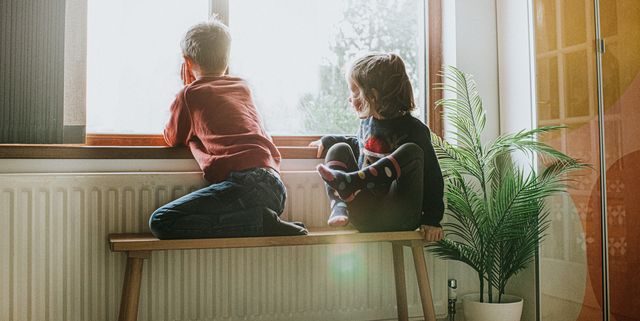When Roma Norriss, a parenting consultant in the UK, found herself without her teaching materials before a breastfeeding class one morning, she realized she had left them in the house she shared with her ex-husband and kids, highlighting a common scenario for children of divorce — forgetting homework in the other house.
Turning this incident into a teaching moment, Norriss explained the concept of “bird nesting” to her class. In this co-parenting arrangement, the children reside in the family home while the parents alternate between that house and a separate one based on custody arrangements. Despite the initial hiccup, Norriss managed the class effectively without her materials, providing valuable insight into the challenges faced by kids with divorced parents.
Explaining the origin of the term “bird nesting” as inspired by the care provided by mama and papa birds to their hatchlings in nature, the practice is gaining traction as an alternative to the traditional co-parenting setup where children move between separate homes. While official statistics on bird nesting are scarce, divorce lawyers note a rise in its adoption, with a UK study revealing that 11 percent of divorced or separated parents have experimented with this arrangement.
The suitability of bird nesting as a co-parenting solution varies depending on individual circumstances. Although it offers advantages such as stability, routine, and improved communication for children, it also presents challenges. Maintaining a familiar environment can benefit children by minimizing disruptions, especially for infants, toddlers, and teenagers with established routines and social circles.
Dr. Tom Murray, a licensed marriage and family therapist, emphasizes the stability that bird nesting can provide during a tumultuous period, facilitating consistent contact with both parents and enabling a smoother transition tailored to the child’s needs. Real-life experiences of families like Cordelia Newlin’s and Kathleen Meyer’s show how bird nesting can minimize the impact of separation on children, making the adjustment easier for them.
While bird nesting may seem ideal for children, licensed therapist Erin Pash warns that it can inadvertently prolong the acceptance of parental separation, particularly if conflicts persist between the parents. The success of bird nesting hinges on effective communication, cooperation, and a shared commitment to the children’s well-being.
For parents, bird nesting offers a temporary respite amidst the challenges of separation, allowing for a gradual transition to separate living arrangements. However, maintaining this setup requires significant collaboration and may become untenable in acrimonious divorces or when new partners enter the equation.
In conclusion, the decision to adopt bird nesting should prioritize the children’s emotional needs and overall well-being. While it can provide short-term benefits, parents must assess its long-term feasibility and be prepared to transition to more permanent arrangements as circumstances evolve. Effective communication, financial planning, and professional support are essential for navigating the complexities of bird nesting successfully.
For those considering bird nesting, experts and experienced parents offer practical advice:
- Prioritize the family’s needs and establish clear agreements.
- Document the arrangement and financial responsibilities.
- Seek therapy for guidance and support.
- Maintain open communication and regular updates.
- Create distinct living spaces within the shared home.
- Duplicate essential items between residences.
- Reassess the arrangement if it becomes challenging for the adults involved.

